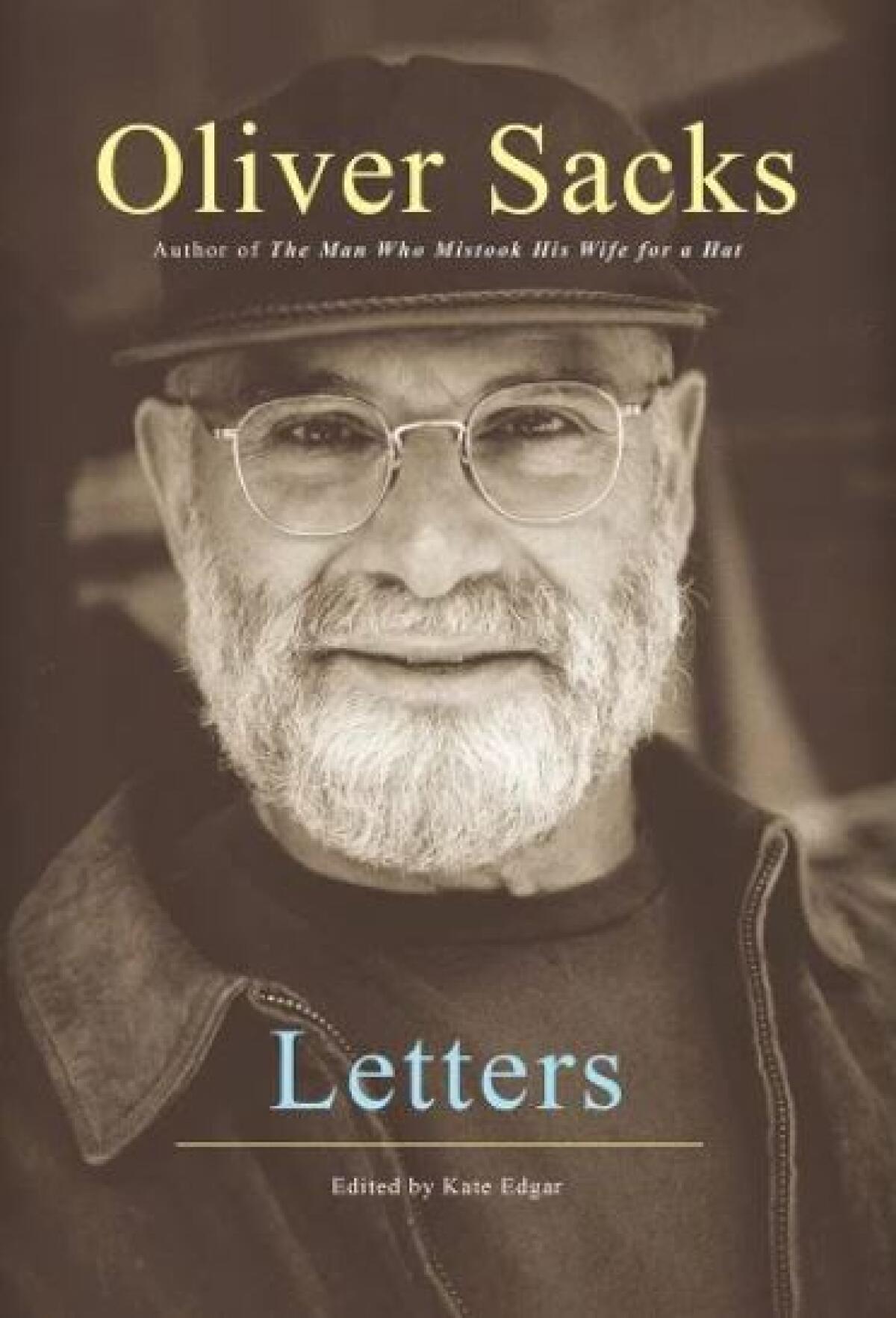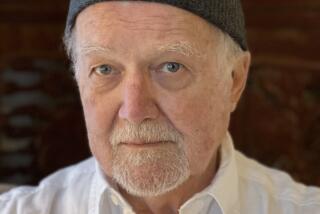Collected letters of Oliver Sacks offer a glimpse into the neurologist’s mind

- Share via
Book Review
Letters
By Oliver Sacks
Knopf: 752 pages, $40
If you buy books linked on our site, The Times may earn a commission from Bookshop.org, whose fees support independent bookstores.
There are those who can write, and those who can’t not write. Oliver Sacks fell into the latter category. A neurologist by trade, Sacks was insatiably curious and wrote ceaselessly and joyfully about anything that caught his interest, which was just about everything. Readers get a new glimpse into his mind this year, nearly a decade after his death, thanks to a handsome new collection of the doctor’s letters compiled and annotated by his longtime editor, Kate Edgar.

To read these letters is to be reminded of the deeply felt humanism and ebullience that Sacks brought to his prose: They include condolences, replies to fans and long scientific musings that read like dry runs for his books. There isn’t a shred of cynicism or pessimism to be found here, only delight in sharing ideas and enthusiasms with friends, family, colleagues and fans. Sacks did his level best to respond to every letter that found him, sometimes at great length.
The particulars of Sacks’ life story were set down by the author in two autobiographies, 2001’s “Uncle Tungsten” and 2015’s “On The Move” — the latter of which, as the letters reveal, was rushed so Sacks, who was terminally ill with melanoma, could see it published. The letters can be read as an autobiography written in real time, as they portray the play of his mind as his life played out. They function as a kind of biography of Sacks’ inner life and the felicitous and rigorous nature of his thought.
The son of two physicians, Sacks began his life as if he were a young adult shot out of a cannon. Upon graduating from medical school in England, he bought a motorcycle and rode across Canada and the United States, gathering adventures and friends along the way. After studying neurology at UCLA, Sacks landed in New York in the early 1960s, seeing patients at Beth Abraham Hospital and the Bronx Psychiatric Center before starting his work in the headache unit at Albert Einstein College in the Bronx.
The mind-body problem, and the ways in which the diseased brain functions independent of human agency, became Sacks’ lodestar, the subject that would preoccupy him for the rest of his career. He encounters some survivors of the encephalitis lethargica pandemic, who are living statuaries, unable to move or communicate, and he had ideas about treating such patients.
As the letters reveal, Sacks’ hands-on approach of spending considerable time with his patients, and listening to those who could communicate, placed him on the fringe of scientific thought. He writes to his parents that when his bosses question his methods, “there is a risk that someone of negligible formal status such as myself may get squashed between two Leviathans.”
Unbowed, Sacks pressed on, and some of the extensive interviews he conducted with severe headache sufferers became the material for his first book, “Migraine.” The approach was a methodological apostasy among many headache researchers. He wrote to a British doctor who favorably reviewed the book: “A most eminent neurologist recently said to me: ‘Your book is fascinating, but of course it’s irrelevant.’”
Sacks’ hybridized approach of combining field research and the techniques of journalism would make him the most famous neurologist in the world, although medical journals repeatedly refused to publish him. When in 1972 an editor in London offered to take on his book “Awakenings,” based on nine case studies of his encephalitis lethargica patients, Sacks seems to have been thrilled but wary. “Publishing such detailed information about living people might be distressing to them,” he writes.
“Awakenings” was published in 1973, and the book kicked off Sacks’ career as a literary personage in earnest. W.H. Auden called the book a masterpiece, and a relationship was forged. “Thank you immensely for your magnanimous reaction to my book,” Sacks wrote to Auden in March 1973. “There is nobody whose favorable response could make me happier than your own.”
Sacks continued his work as a doctor and an author, the one profession feeding the other. When he compiled a series of essays he wrote about patients with unusual intellectual disabilities into “The Man Who Mistook His Wife for a Hat,” Sacks entered an entirely new realm of global recognition, which he found both satisfying and discomfiting. “There are certainly two sides to this business of — being known, and suddenly finding oneself an object of ceaseless attention and demand,” he wrote to his father, Samuel Sacks, in the spring of 1986. “I … long passionately for peace and quiet — I receive at least fifty or sixty letters and phone-calls a day.”
Superstar Sacks’ letters in this era begin to be addressed to Susan Sontag, Deepak Chopra, Thom Gunn, Jane Goodall. Sacks’ publishing royalties had made him wealthy, and yet he doggedly pursued new avenues of interest, testing out hypotheses in his letters about Tourette syndrome and color perception with colleagues while churning out essays and books with an almost graphomaniacal fervor.
Even as he was staring down his own imminent death, Sacks proceeded apace. “I am going down fast, and do not know how long I can hope to retain consciousness and coherence,” he wrote to editor Dan Frank in the summer of 2015, while also laying out his plans to “put together a modest (c 40,000 word) book” of essays. Even at the precipice of death, Sack was alive to the world.
Marc Weingarten is the author of “Thirsty: William Mulholland, California Water, and the Real Chinatown.”
More to Read
A cure for the common opinion
Get thought-provoking perspectives with our weekly newsletter.
You may occasionally receive promotional content from the Los Angeles Times.










